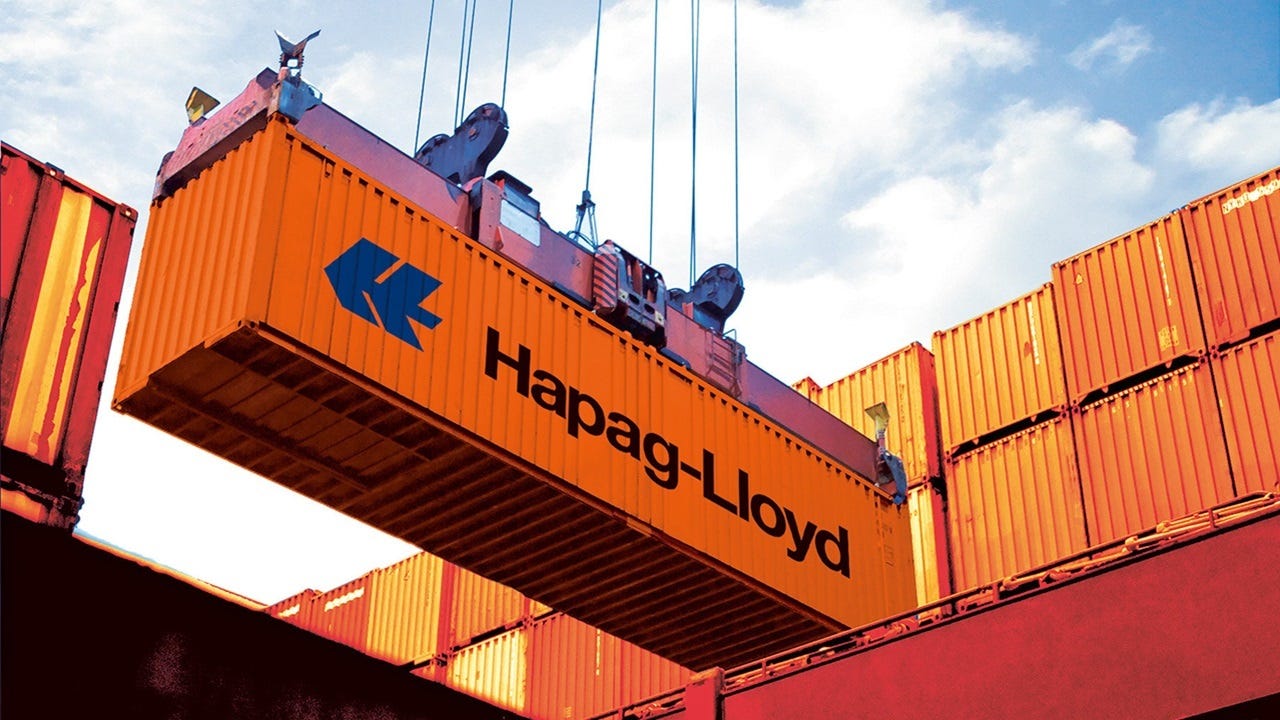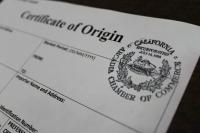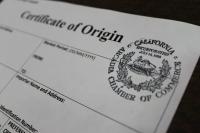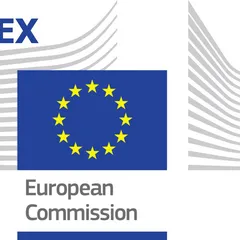THIRD-PARTY LOGISTICS 101: THE ULTIMATE GUIDE TO 3PLS
none
Third-Party Logistics 101: The Ultimate Guide to 3PLs
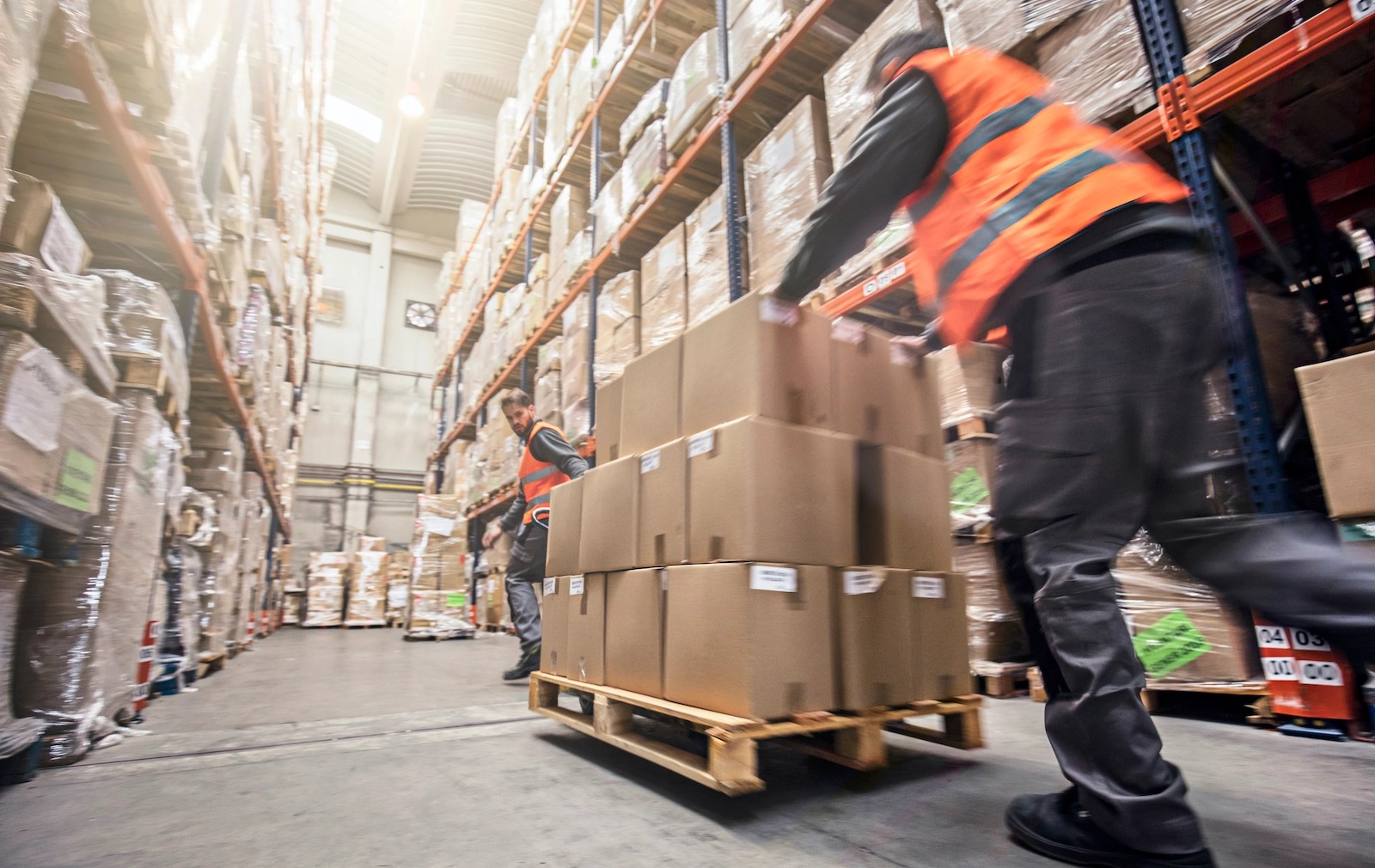
If you are an ecommerce business owner, order fulfillment is an integral part of your operations. As your business grows, you may find that fulfilling customer orders in-house is no longer feasible.
At this point, you’ll need to expand your fulfillment strategy; for many businesses, this means outsourcing fulfillment to a third-party logistics (3PL) company.
As a business owner, it’s vital to understand how 3PLs work in order to make the most of your ecommerce fulfillment strategy and grow and scale your company. Here’s what you should know.
What is third-party logistics (3PL)?
Third-party logistics (or 3PL) refers to the outsourcing of ecommerce logistics processes to a third partybusiness, including inventory management, warehousing, and fulfillment. 3PL providers allow ecommerce merchants to accomplish more, with the tools and infrastructure to automate retail order fulfillment.
We don’t know for sure who coined the term “third-party logistics,” but companies began trending toward outsourcing inbound and outbound logistics services to third parties in the 1970s and ‘80s.
With the introduction and growth of ecommerce in the ‘90s and 2000s, the term 3PL has become ubiquitous, and 3PLs have expanded their services. The supply chain integration of warehousing operations and transportation services has become what we now call third-party logistics.
What is a 3PL vs. 4PL?
When researching 3PLs, you may come across the term 4PL. A 4PL adds an additional degree of separation between ecommerce merchants and the 3PLs shipping their products: When a business contracts with a 4PL, the 4PL manages and arranges 3PL services for a client. This is sometimes called “double brokering.”
4PL companies often offer end-to-end supply chain management for a client, including 3PL services, manufacturing, inventory procurement, and more.
3PL order fulfillment process
If you’re considering working with a 3PL company or are new to outsourcing shipping, what goes on in a 3PL fulfillment center may seem like a black box.
But the 3PL fulfillment process doesn’t have to — and shouldn’t — be a mystery!
So what exactly happens at a 3PL’s ecommerce warehouse once a customer clicks “Submit order” on your online store?
Receiving
A 3PL can’t ship orders without inventory on hand. The “receiving” of inventory in a 3PL warehouse refers to the acceptance of incoming inventory followed by its storage.
Each 3PL has its own processes and capacity for receiving and storing inventory.
For example, at ShipBob, we require clients to fill out a Warehouse Receiving Order (WRO) so that we know which products we will be receiving and how many units. This helps us stay organized and timely with receiving, meaning we can start fulfilling your orders more quickly and efficiently.
3PL Warehousing
Once we receive your inventory, we store your items in our fulfillment centers. Each SKU has a separate dedicated storage location, either on a shelf, in a bin, or on a pallet.
Different 3PLs have different storage capacities; not all 3PL warehouse space is created equal. It’s important to work with a 3PL that has more than enough storage space for your current inventory — as your product line and order volume grow, your 3PL storage must be able to scale with you.
Note: A 3PL is different from an on-demand warehousing company that just matches you with excess space in miscellaneous warehouses without operating any logistics centers themselves.
Picking
When a customer places an order, it’s time for the 3PL fulfillment process to begin. (You may have heard the phrase “pick-and-pack fulfillment” before — this is the first half of that.)
Some 3PLs require you to manually upload orders to their system. Sometimes, this involves spreadsheets including order details, customers’ shipping details, and more. This can be an inefficient and complex way to manage orders.
Other 3PLs have sophisticated technology that integrates directly with your ecommerce platform or marketplace. These 3PL fulfillment software integrations bring orders, shipments, inventory tracking and stock levels, and more together in one place to streamline the fulfillment process for more automated shipping.
This includes automatically pushing customers’ online orders to your 3PL as soon as they’re placed.
When an order is sent to your 3PL, it is assigned to the warehouse picking team. The picker receives a picking list of the items, quantities, and storage locations at the facility to collect the ordered products from their respective locations.
Packing
When all items in an order have been picked, it’s time to get them securely packed for shipping. The packing materials used will depend on your 3PL’s capabilities, your brand preferences, and the items being shipped.
The most common standard packing materials include:
Some 3PLs will charge for packing materials as a separate line item, while others include them as part of their fulfillment management services.
As experienced shippers, the 3PL will choose the best packing materials to both protect your products and achieve the lowest practical dimensional weight. They will also optimize packages so that you don’t have to split shipments.
Dimensional weight is a shipping pricing technique that takes into account package dimensions to determine shipping rates. Using the right packing materials can help keep logistics costs low.
If you want your brand to shine through your shipping, make sure you partner with a 3PL that allows you to use custom packagings, such as custom boxes and inserts. Oftentimes, receiving a package is the first in-person experience a customer has with your brand, so branded packaging can make a big impression.
Shipping
The next step is shipping your order. Most 3PLs will purchase and print shipping labels on your behalf. Some 3PLs have preferred carrier partners, while others compare shipping costs from a variety of carriers. The latter helps 3PLs offer clients the most affordable pricing possible for the delivery speed that each customer chooses.
Carriers such as DHL, USPS, and UPS pick up orders from 3PL warehouses to ship. The carrier and shipping speed for each order depend on the 3PL’s partnerships and policies as well as the ship options offered by the client and selected by the end customer.
Once the order ships, 3PLs with the integrated technology mentioned above will automatically push tracking details to merchants’ online stores.
Returns
Many 3PLs also offer return processing services. If a customer returns an order by shipping it back to your 3PL, your 3PL will process the return and restock or dispose of the item depending on their policies and your preferences.
You can choose to have your 3PL provide return shipping labels for your customers. This offers convenience for both you and your customers; you won’t have to handle returns in-house, and customers can easily track the status of their return order.
3 valuable services 3PLs offer
Beyond shipping orders, 3PL fulfillment services can vary depending on the provider you choose. Here are some of the most beneficial features and logistics services offered by 3PLs.
1. Inventory management
Managing inventory involves much more than just warehousing your products. A 3PL should allow you to easily sync inventory with your online store, view real-time inventory levels at each 3rd party fulfillment center, and proactively reorder inventory to prevent stockouts.
Once your 3PL receives and stores your inventory, you can check the quantity on hand and units sold per day for each product. This offers full visibility into what is available to ship to your customers at any given time.
Depending on your 3PL’s technology and workflows, you may also be able to push real-time stock counts back to your store’s website, so your customers immediately know if items are out-of-stock.
2. Two-day shipping
Consider the following stats:
- 73% of shoppers expect affordable, fast deliveries.
- 44% of online shoppers who abandon their shopping carts do so because of shipping and handling costs.
- 24% of customers have canceled an order due to slow shipping.
Combine these trends with the fact that the most popular online retailers offer two-day shipping and free shipping options, and it’s clear to see: Customers expect both fast and affordable shipping at the click of a button.
As we’ll cover in the next section, 3PL warehouse location can make or break your ability to deliver on customer expectations by storing inventory closer to your shipping destination. Working with the right 3PL can help you offer 2-day shipping to your customers at an affordable price.
Third-party logistics service providers often have relationships with shipping carriers that allow them to negotiate discounted rates for their clients; however, the biggest cost savings for 2-day shipping come from distributing your inventory across fulfillment centers in different regions.
[Download: ShipBob’s 2-Day Express Shipping: How to Drive Revenue Through Ecommerce Fulfillment]
3. Distributed inventory
When working with a 3PL that has several warehouse locations, you can split inventory across fulfillment centers to ship each order out from the 3PL warehouse that is closest to your customer. This model is called distributed inventory.
With the right technology in place, 3PL companies can automate the order fulfillment process using powerful algorithms that route each order to the optimal fulfillment center.
If your customers are geographically distributed across the country, you will likely want to distribute your inventory to multiple fulfillment centers. This puts your inventory closer to your shipping destinations, meaning you can offer guaranteed two-day shipping via ground for customers in those surrounding areas. This can be much cheaper than expedited air shipping.
Distributing inventory won’t necessarily be cost-effective for everyone, especially if you don’t yet have a high volume of shipments. As your online business grows, however, having a network of fulfillment centers can help you efficiently reach more customers.
Splitting inventory across 3PL warehouses can also help you be prepared in the event that your orders can’t leave a particular fulfillment center (for example, in extreme weather conditions). Distributing inventory also helps with inventory management: When you store products in multiple geographic areas, you will have backup stock if you run out in one.
What are the benefits of working with a 3PL?
There are many benefits to outsourcing fulfillment to a 3PL. While different 3PL companies have different capabilities, all 3PLs offer solutions for managing inventory, packaging, and shipping, ultimately providing reliable logistics systems and helping to maximize profitability for a business.
1. Save time and money
By investing in a partnership with a 3PL, you eliminate the need to buy or rent the warehouse space, logistics operations, labor, and technology required for in-house fulfillment.
As your business grows, fulfilling orders yourself becomes more and more expensive. These costs include warehouse space, forklifts and other equipment, warehouse management software(WMS), recruiting and labor costs, workers comp, and liability insurance.
You also save time by outsourcing fulfillment tasks to a 3PL. Instead of spending time packing boxes, standing in line at the post office, or building out fulfillment infrastructure, working with a 3PL gives you time back to focus on more strategic initiatives, such as product development and marketing.
“ShipBob can process things more quickly than we could in-house and at scale. These time savings translate into cost savings as well.”
Sarah Chalos, Co-Founder and President, I Heart Keenwah
2. Leverage industry expertise
As an ecommerce professional, chances are you don’t have the time to become well-versed in every detail of shipping and logistics. That’s where a 3PL comes in: staffed by ecommerce logistics professionals, your 3PL will be knowledgeable and up-to-date with the latest industry trends and complexities — so you don’t have to be.
3PL companies also have the technical resources and partner network — including marketing agencies, custom packaging providers, and more — that allows them to constantly improve supply chain efficiency and make supply chain optimizations to help drive ecommerce success.
3. Expand your reach
If you’re only selling in one region, you’re limiting your business’s potential. Working with a 3PL can help you expand your reach.
3PL companies have an expansive network of fulfillment centers that in-house fulfillment lacks. A 3PL with fulfillment centers in major US cities across the country can help you reduce the cost of shipping and transit time for orders.
Shipping orders out from a single location can also mean more expensive postage for packages that travel across multiple shipping zones.
“When we joined ShipBob, only 20% of our customers were in the US. By the end of the year, that number will be around 40%.”
Greg MacDonald, CEO & Founder, Bathorium
What types of online stores should use third-party logistics providers?
Nearly any ecommerce store — regardless of ecommerce platform, industry, or product category — can benefit from outsourcing fulfillment. Here are three signs you’re ready to outsource fulfillment to a 3PL:
1. You’re shipping over 100 orders per month
While there’s no magic number, if your order volume has increased and you can’t keep up, it’s time to outsource to shippers. It’s at the point when you’re asking friends and family members to help you pack boxes or you’re staying up into the late hours of the night just to meet demand.
This is a problem because you’re swamped by low-dollar activities that don’t generate revenue, and it’s holding you back from achieving growth. And as you continue to grow, you will spend more time on fulfillment and less time running your business
Every hour you spend reacting to new orders that come in — packing items, printing labels, driving to the post office, waiting in line, and so on — you’re missing the opportunity to acquire more customers, develop new products, and launch marketing campaigns.
2. You’re running out of space to store inventory
As your order volume grows, you’ll need more inventory on hand at any given time. If you’re fulfilling orders from home, it can be hard to find the storage space. A 3PL warehouse can save you from a garage or living room filled to the brim with product — and arguments with significant others or roommates.
Outsourcing inventory warehousing and order fulfillment to a 3PL can help you stay organized and manage inventory more efficiently. You can also grow your product line without worrying about inventory storage limitations.
“We started filling the bottles with syringes ourselves on the living room floor, packing the orders, and waiting in line at USPS. Fast forward 2 years, and we work with ShipBob to fulfill our orders globally.”
Tamarin Oblowitz, Co-Founder, Baja Bae
3. You want to offer free 2-day shipping
Amazon has made free 2-day shipping the standard for ecommerce. But if you’re self-fulfilling orders, offering free 2-day shipping can take a huge toll on your margins — especially if you’re offering expedited 2-day air rather than ground shipping.
Working with a 3PL can make offering free 2-day shipping more feasible and affordable for merchants of all sizes.
How to choose the best 3PL company
Partnering with a 3PL company may seem like a no-brainer by now — it can help your business save time and money, freeing up resources to focus instead on product development, marketing, and business growth.
However, when it comes to choosing a 3PL company to handle your online store’s order fulfillment, the options can seem endless.
It’s important to find a fulfillment company that you trust to handle your inventory, provide a positive customer experience, maintain high customer satisfaction, and ultimately help you grow your business.
“I felt like I couldn’t grow until I moved to ShipBob. Our old 3PL was slowing us down. Now I am encouraged to sell more with them. My CPA even said to me, ‘thank god you switched to ShipBob.’”
Courtney Lee, founder of Prymal
Here are three paramount questions to ask a potential third-party fulfillment provider to make sure you find a partner that is a great fit for your business.
1. How are you different from traditional 3PL partners?
When outsourcing order fulfillment, it’s important to look for a solution that goes beyond the traditional pick, pack, and ship model. This means that, instead of only facilitating one isolated part of the fulfillment process, the 3PL coordinates with all aspects of the retail supply chain.
This modern approach to fulfillment can help your business make more informed decisions about supply and demand and give your customers a better overall experience.
2. How does your technology work?
One of the most important elements of choosing a fulfillment solution is finding technology that works not just for you, but with you. There are two main technological elements to look for:
- How the 3PL’s technology will connect to your online store(s)
- How the 3PL’s software helps you leverage data
These two elements make up what we call a tech-enabled 3PL. A tech-enabled 3PL is a technology company that has developed streamlined, integrated shipping and fulfillment solutions for ecommerce businesses.
In addition to traditional fulfillment services, such as warehousing, picking, packing, and shipping, the 3PL’s technology helps with everything from automation, order, and inventory management to tracking orders and managing ecommerce returns.
“We use Shopify as our ecommerce platform. The seamless integration between the two systems has made it very easy to do everything from manage inventory to create prepaid orders.”
Greg MacDonald, CEO of Bathorium and Customer Success Manager at Shopify
3. Where are your 3PL fulfillment centers located?
When it comes to considering a 3PL’s location, we aren’t just talking about where their headquarters or offices are. You also need to know how many fulfillment centers the 3PL owns and operates, as well as where each one is located.
This information will help determine if you can offer the fastest delivery and most affordable 3PL shipping options to your customers. As mentioned above, the number and location of 3PL warehouses can help inform your shipping strategy, including distributed inventory and two-day shipping.
Top 3PL and ecommerce shipping companies
Now you know what to look for in a 3PL shipping solution, but always remember to choose a solution that fits in with your business. Extra hassle and clunky software doesn’t help you get orders out sooner.
Here are some of the top ecommerce shipping companies and 3PLs:
- ShipBob
- FedEx Supply Chain
- Rakuten Logistics
- RedStag
- UPS Supply Chain Solutions
3PL FAQs
Check out some of the most frequently asked questions about third-party logistics companies.
Why is 3PL important?
Managing the packaging and shipping of products by yourself can be difficult and costly. And with the ever-growing influence Amazon has on the retail market, ecommerce stores need to offer fast and affordable shipping if they want to compete. 3PLs specialize in supply chain management, helping these companies streamline the shipping process for cost-effectiveness and better logistic efficiency.
What is the difference between 3PL and a freight forwarder?
A freight forwarder coordinates with multiple carrier methods including air, rail or highway to ship goods from one destination to another. Freight forwarders manage the relationships and important tasks in the shipping process: from negotiating freight changes to preparing shipping documents, but do not actually move the freight itself. They act as a liaison between carriers and companies looking to ship their products. 3PLs handle the entire supply chain, including picking and packing, warehouse storage, as well as shipping.
When should you use a 3PL?
If your ecommerce store has experienced rapid growth within the last year, it may be time to consider working with a 3PL company. Often times, companies partner with a 3PL when they are looking to scale their business without wanting to build and maintain their own warehouse in-house. Instead, they will look to leverage the expertise of a 3PL company to handle all shipping logistics.
How do you measure 3PL performance?
Once you have selected a 3PL company to handle your shipping logistics, it’s important to continually measure for performance by looking at different KPIs. One shipping KPI includes the rate of returns due to shipping damage or error. This KPI ensures there is a continued focus on shipment quality and accuracy. Another important shipping KPI to track is on time delivery. This KPI provides insight into whether or not there is a bottleneck in the current fulfillment process that needs to be addressed to provide maximum efficiency.
Source: https://www.shipbob.com/blog/3pl/
Writer: Rachel Burns

